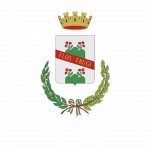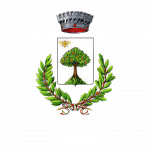Unique, precious and unmistakable: Modena's black gold, ambassador of tradition in the world.
History of Balsamic Vinegar
Linked to the roots of the traditional Balsamic Vinegar of Modena is the ancient custom of cooking grape must. A funerary painting found in Egypt bears witness to the fact that this practice goes back a long way, to around 1000 B.C. and perhaps even further. The same cooking practice was also traditional among the ancient Romans. The so-called sapum was used as a medicine and, in cooking, as a sweetener or seasoning.
As recounted by the expertly compiled testimonies of the Consortium for the Protection of Balsamic Vinegar of Modena, founded in 1993 to promote the product around the world and ensure its loyalty to ancient traditions, vinegar production has been inextricably linked to the city of Modena since the 11th century to become a real cultural phenomenon linked to the territory in the coming times. In 1046, Boniface, Marquis of Tuscany and father of Matilda of Canossa presented Henry III, Holy Roman Emperor, on his passage through the territory of the Po Valley with a perfect vinegar. Towards the end of the 13th century, the art of vinegar production was also cultivated at the Estense Court in Modena. Nevertheless, it was not until 1747, in the cellar records of the Dukes of Este that the adjective balsamic appeared for the first time. In the 1800s, the traditional Balsamic Vinegar of Modena became the protagonist of the most important international exhibitions. At the same time as this enormous success, the first dynasties of producers also established themselves and codified the production processes still used today.
The black gold that smells of tradition
During the 19th century, it was a widespread custom in the great families of our territory to bequeath estates and land to the male children, the female daughter being left the family vinegar battery of barrels. It was their duty to take care of the vinegar production in the lofts of the houses, with the scorching heat of summer and the damp cold of winter; to check that the space was always dry and ventilated, to do the annual topping up and transferring and to check the patches of cloth closing the barrels. This is what has always been handed down from generation to generation and, even today a battery of barrels is a special gift as a dowry for a marriage or the birth of a child. Nothing has changed even on the method of production and preservation. To make traditional balsamic vinegar from Modena, only grapes native to the area are used, the must is cooked and fermented before being poured into wooden barrels made of oak, chestnut, oak, mulberry or juniper for acetification. Then care and wait, at least 12 years for a Traditional Balsamic Vinegar of Modena DOP and up to 25 for an extra-old one. Traditional balsamic vinegar of Modena is a slow-moving family affair that preserves and carries on traditions, smells of life and conveys hard work and dedication.
What is the best way to enjoy balsamic vinegar? How to use it in cooking?
Cooked grapes must, be matured by slow acetification and fermentation. A very long ageing process in batteries of casks of different sizes and woods, without the addition of any other substance. A final product with a dark brown, rich and shiny colour. A consistency of smooth syrupiness, a sweet and sour flavour with velvety undertones and an aroma of pleasant, harmonious acidity. These are just some of the characteristics of the Traditional Balsamic Vinegar of Modena as described by the Consorteria’s master tasters according to the centuries-old recipe.
What is the best way to enjoy this incredible product? How to use it in cooking? Traditional balsamic vinegar of Modena is a truly versatile condiment that lends itself to an infinite number of combinations, adding a magical touch to recipes for both savoury and sweet dishes. It can be tasted directly from the dessert spoon or poured over 30-month-aged Parmigiano Reggiano cheese, red meat, baked fish or crudities. It is perfect not only in salads but also as an accompaniment for grilled vegetables and, to finish the meal in style, it can also be poured over strawberries, berries and ice cream desserts. Whether for a classic or unusual pairing, what is certain is that traditional balsamic vinegar of Modena should be used raw, without exaggerating the quantities. Anyway, give free rein to creativity, imagination and experimentation, for truly surprising results on the palate!
Winery tour: where to taste traditional balsamic vinegar in and around Maranello
For more than 10 years, traditional balsamic vinegar from Modena has also found a home in Maranello. It can be found at the Maranello Municipal Committee for the promotion and valorisation of typical Modenese products and, since 2012, also at the town’s Vinegar Cellar in Via Abetone Superiore 196, where the must from local grapes ferments, matures and ages to the right degree. The fascinating attic spaces in San Venanzio are open by reservation only on Sunday mornings and in June, July and August. Traditional balsamic vinegar from Modena can be tasted in two other municipal vinegar cellars in the Maranello area. In Formigine, in the premises of Villa Benvenuti, and in Fiorano Modenese, on the upper floors of the pentagonal tower of the striking Spezzano castle. Organising guided tours and tastings is truly a unique way to get in touch with this product, learn about its exciting history, taste its unique flavour and take home an unforgettable memory in every sense.









